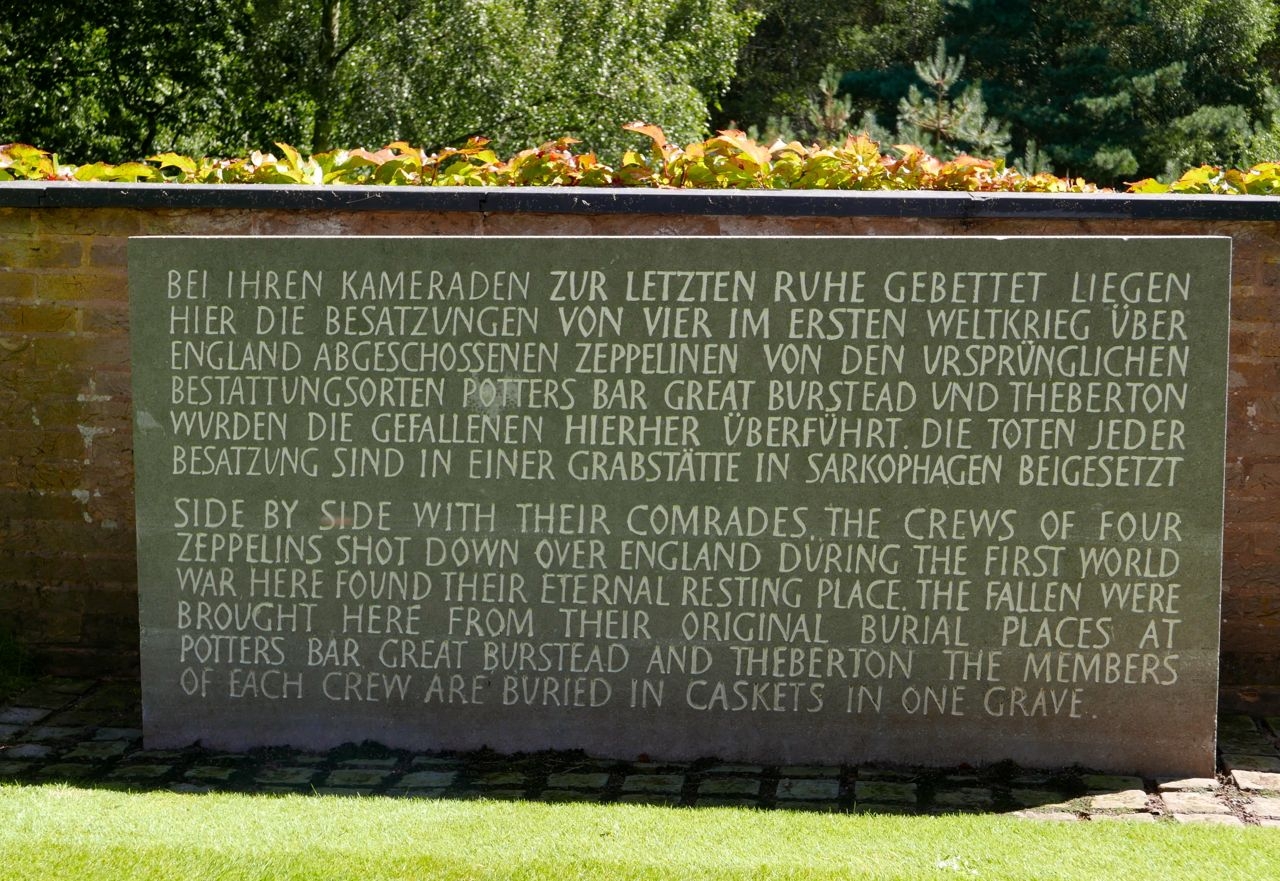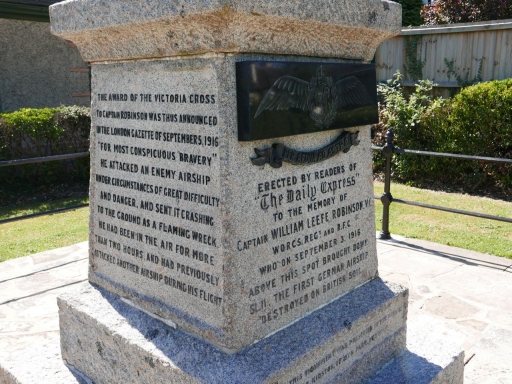William Leefe Robinson became the first British pilot to shoot down a German airship in the early hours of September 3rd 1916, winning the Victoria Cross for his actions.
Robinson pursued SL11 on a night raid over the northern outskirts of London, repeatedly opening fire with his BE2c fighter until a concentrated burst from close range set it ablaze.
The airship crashed to the ground in the Hertfordshire village of Cuffley, killing the crew of 16 commanded by Hauptmann Wilhelm Schramm.
After 18 months of living with the threat of German air attacks, Britain immediately acclaimed Robinson as a hero. He was awarded the Victoria Cross, the UK’s highest award for gallantry, within 48 hours.
First World War air raids were mostly commonly associated with the giant Zeppelins, but the craft engaged by Robinson was a lesser-known airship built by the Schütte-Lanz company.
Intercepting airships proved a tough technical challenge until the advent of new incendiary ammunition.
 The crew of SL11 were initially buried in a cemetery at Potters Bar, near Cuffley. In 1962, their bodies were exhumed and laid to rest at Cannock Chase German Military Cemetery near Stafford, in the West Midlands, with fellow crewmen from other German airships lost over England in 1916/17 (Photo: Centenary News)
The crew of SL11 were initially buried in a cemetery at Potters Bar, near Cuffley. In 1962, their bodies were exhumed and laid to rest at Cannock Chase German Military Cemetery near Stafford, in the West Midlands, with fellow crewmen from other German airships lost over England in 1916/17 (Photo: Centenary News)
Captain Robinson was shot down and taken prisoner by the Germans in April 1917 after being posted to France with Britain’s Royal Flying Corps (forerunner of the Royal Air Force).
He was a victim of the flu pandemic at the end of the Great War, dying on New Year’s Eve 1918.
Air raids on Britain, starting with the Zeppelin attack on Great Yarmouth in January 1915, put the home front in the direct line of fire for the first time, causing widespread alarm and anger.
Zeppelins also targeted cities in continental Europe, including Paris, Antwerp, Liège and Warsaw. British and French airmen struck at Germany.
In 1917, new German bomber aircraft joined the air war against the UK.
Demands for improved defences resulted in Britain creating the world’s first independent air force, the RAF, in April 1918.
Also in Centenary News:
‘First World War in the Air’ exhibition at the RAF Museum London & Cosford
Sources: Wikipedia/RAF Museum/various
Images: Centenary News
Posted by: CN Editorial Team
